THE GALAPAGOS—A low rumble, a cross between muffled mooing and distant foghorns, pierces the heavy air. This is what it sounds like when giant tortoises mate.
The song is bizarre yet magically compelling, like the Galapagos themselves.
This archipelago in the South Pacific is home to 120-year-old giant tortoises, which look through people as if they have seen it all before—because they have. It’s also home to red sand beaches that look like Mars. And it’s home to penguins.
Yes, the flightless birds, usually found in the tundra of Antarctica, have made it here to the equator, where temperatures hover in the high 80s and humidity blankets all. The Galapagos penguin is the northernmost breed and one of the smallest, at 20 inches tall. It seems so incongruous, its little head bopping in the crystalline waters rimmed by outgrowths of volcanic eruptions.
Their stories are told in Secrets of the Penguins, premiering on National Geographic on April 20 and streaming on Hulu and Disney+ the next day. The franchise delivers fast-paced documentaries that prove how innovative, adaptable, and endangered these animals are.
The fourth in James Cameron’s Secrets Of series, after focusing on whales, elephants, and octopuses, has Blake Lively narrating, following Sigourney Weaver, Natalie Portman, and Paul Rudd, respectively.
The beauty of this franchise is that it reveals previously hidden behaviors and reminds us that humans aren’t the only sentient beings on the planet. There’s no lecturing about how we are destroying the Earth. Instead, it spotlights how other species live.
To show some of the animals’ habitats, National Geographic-Linblad Expeditions took journalists to what feels like the middle of nowhere and led guided tours through pristine terrain.
A couple of months earlier, Bertie Gregory, National Geographic Explorer and a BAFTA and Emmy winner, recalls being surprised when asked to host the three-part series.
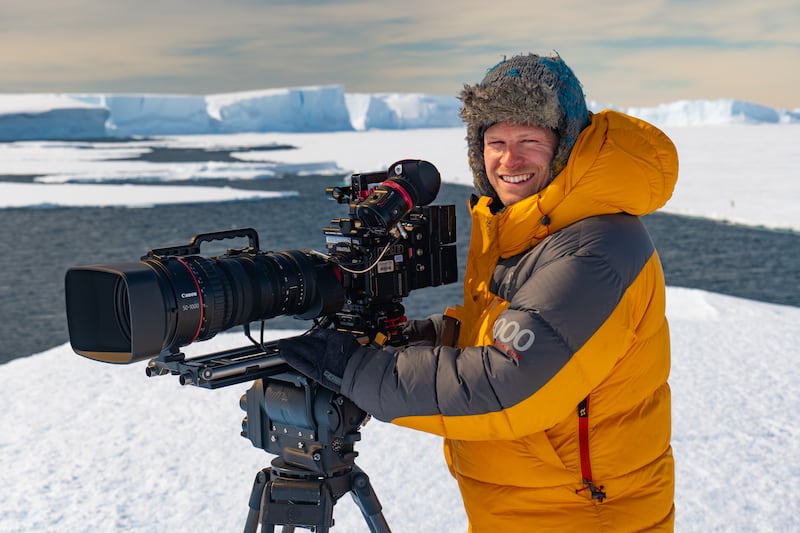
“I did not see that coming,” Gregory admits from his home in Bristol, England. “But then it made sense why they were asking me, because I have spent a lot of time getting very cold filming penguins. And I thought, ‘Wow, this is going to be a real challenge because penguins live in very difficult places to work, but also, they have actually been filmed quite a lot.”
The show’s title itself presented Gregory with his biggest challenge, almost like a dare.
“Filming a new Secrets, you’ve got to deliver on secrets,” he continues. “I’m very pleased to say that on every single shoot, we saw penguins. We didn’t just see them–we filmed penguins doing things that I have certainly never seen before, and it turns out no one has ever seen them do before, so that was really cool.”
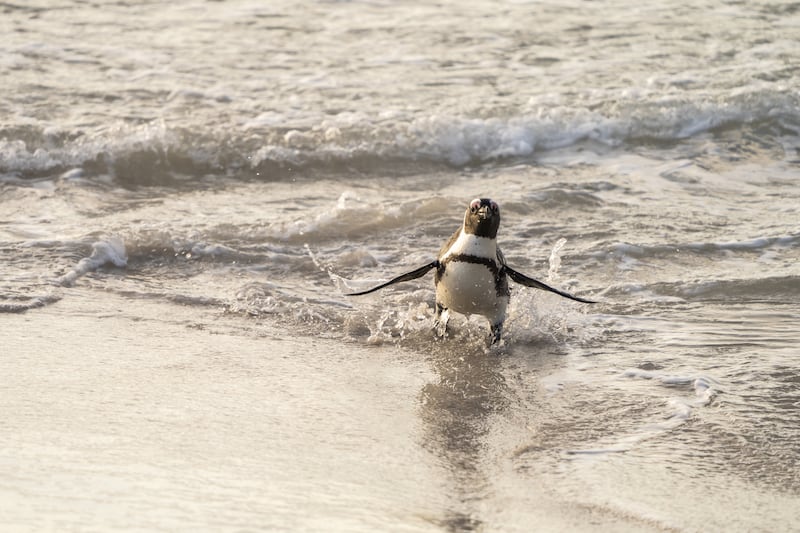
Despite this, some may feel they know all they need to about penguins, given how prevalent they are in pop culture. (I’m sure we can all hear Morgan Freeman’s voice narrating a certain documentary right now.) That meant pressure to deliver something new.
“March of the Penguins is that iconic film that everybody has heard of, if not seen,” says Martin Williams, executive producer. “And I think it set the bar very high. Certainly, the whole of Episode 1 is about emperor penguins, and March of the Penguins is about emperor penguins. You watch that film, you think, ‘Well, what’s left to tell?’
“So, we set out with, well, there must be something more,” he continues. “We knew we would unearth some new behavior and some new details about their lives. These are animals that live on land through the darkest, coldest winter on the planet.”
Among the firsts in the series is a shot that Gregory captured, which went viral. Roughly 700 emperor penguins jumped off a 50-foot-high ice cliff. Behind them, the ice was cracking, creating a crevasse. Below them, killer whales lurked. A brave one took the plunge, and others followed.
In the Antarctic, where wind-blown snow makes everything appear ghostly, there are still scenes of absolute clarity. The Secrets episode about the emperor penguins reveals a dress rehearsal. A male penguin uses his beak to nudge a piece of ice that’s next to his mate, pushing it below his sturdy body. He’s practicing for the real deal. Soon after, we see her lay the egg, and he knows precisely how to protect it. If the egg lingers on the ice for more than a minute, it will freeze.
Another striking, emotional scene unfolded in the Falklands. A rockhopper penguin and a massive Southern Sea Lion get into it. Any mother can immediately relate to this angry little penguin. OK, maybe your brows aren’t bright yellow and shooting off your face, but she is every mom when her children are threatened.
She just finished feasting and is heavy with fish. Ready to return to feed her chicks, this behemoth, 70 times her size, comes after her. It’s a moment more sensitive viewers will watch from behind splayed fingers. The two animals are nose to beak, and the penguin does all she can—squawk at him and flap her flippers.
“When the rockhopper mum fights back against the sea lion, I love that because it was a huge moment,” Ruth Roberts, executive producer, says. “We build this story up of these incredible, feisty, strong-willed, powerful individuals. Ultimately, she’s just fighting for her young, but she’s got to go against the odds. She’s got to take on her Goliath. And yeah, when she’s got nowhere to hide, she’s got no moves left, she turns around and goes nuts at it.
“You see it recoil.” Roberts continues. “And what on earth? It backs away. It’s such a powerful moment. Like, she’s got no right to win that fight, and she does, and then she’s got her belly full of fish that she can then go back and feed her young, and the next generation is sorted.”
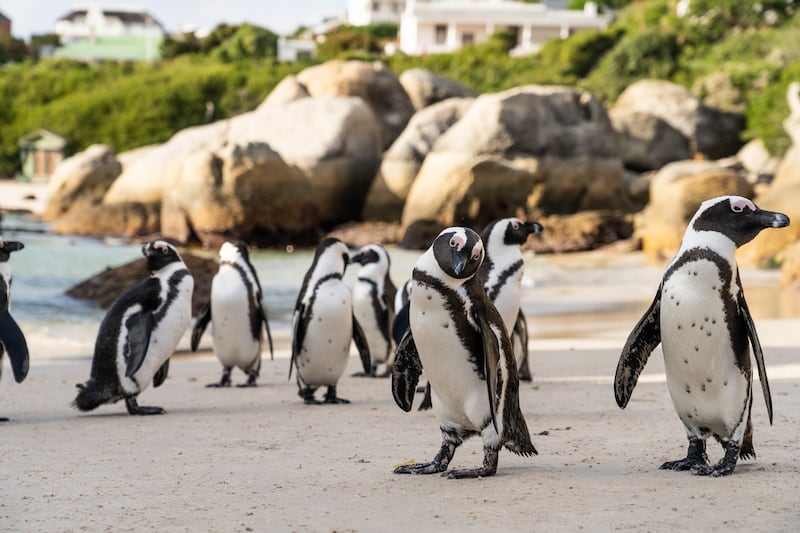
It may seem odd to feel this bond with penguins or giant tortoises. It certainly did for me. No one would accuse me of being outdoorsy. I’m an inner-city kid, a graduate of schools where Fresh Air Fund reps would visit and talk about a world of nature beyond pigeons, rats, and roaches. And my secret is I’m often terrified by wildlife, but curiosity outweighs fear.
Offered this opportunity, how could I say no?
Even if it meant trading in cute flats for hideous but practical water and land shoes and ditching my favorite scarves for a bulky life jacket, I was all in. And so, a day after learning how to adjust my mask, I was snorkeling in the deep water of the South Pacific.
Still, some of the Bronx kid is always there. Others spot whitetip sharks elegantly cruising through the water just below us and hammerheads nearby. They surface, thrilled, and shout, “Sharks!” I’ll admit to the fastest heartbeat you can have without it counting as a coronary event. And to the fellow journalist who told me, “They’re more afraid of you than you are of them.” No.
One of the most surreal moments was swimming past a dragon. Maybe it wasn’t quite Drogon, but marine iguanas are close enough. They’re black, fading in with the lava, fierce-looking, and have long, powerful tails that propel them through the water. Their cousins, the land iguanas, are yellow, bigger, and share space with those giant tortoises.
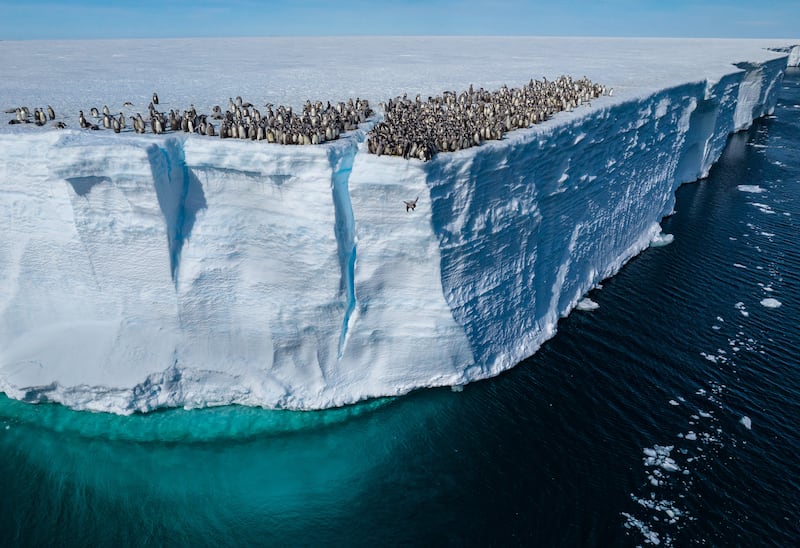
Some of the islands are 5 million years old (mere babes geologically) and are feeling the effects of the climate crisis. Rising sea temperatures have changed everything, everywhere. Ecuador’s stringent regulations require visitors to attend lectures about how to behave to keep these animals and their ecosystem as safe as possible.
Trained, passionate, and local naturalists guide tourists, stressing the unique aspects of these islands, which feel as if time has forgotten them. There’s no getting too close to animals. When sea lion pups and their much larger parents sun themselves on a path, it’s the humans’ job to give them a wide berth. As much as you may want to pet or cuddle them, do not.
Blue-footed and red-footed boobies perch on natural shelves in lava. Bright orange Sally Lightfoot crabs cling to jagged outposts. During the rainy season, which is now, waterfalls cascade over rock formations. Last week, everyone was talking about how it’s raining more than usual, harder than usual. It’s another sign of climate change.
How does it affect the penguins? National Geographic Explorer Pablo “Popi” Garcia Borboroglu, who has the world’s coolest title as President of the Global Penguin Society, considers this. A marine biologist and conservationist, he grew up in Argentina, enchanted by Magellan penguins.
“Penguins evolved in predator-free islands,” he says. “So, they didn’t need to fly. They could improve their ability to dive, and to conquer a new environment, and get more food, but they didn’t have to escape by flying. But this is one of the main threats for penguins now because humans have been introducing exotic, unfamiliar species to these places, predators like rats or maybe foxes or possums, hogs, all kinds of animals.
“And the other thing with penguins is that of the 18 species, half are considered really threatened,” he continues. “They accumulate threats, not only in the ocean but also on land. So, they are dealing with fisheries, oil pollution, climate change. And then when they go on land, [they face] human disturbance, the introduction of unfamiliar predators, and then you have climate change on top of that. So, the combination of things is what’s creating a lot of problems for penguins.”
The hope of the series is that if we learn some of their secrets—with its release timed—for Earth Day, we’ll feel the connection and do whatever we can to help protect them. If more countries follow the Galapagos’ lead, much can be saved before it’s too late.
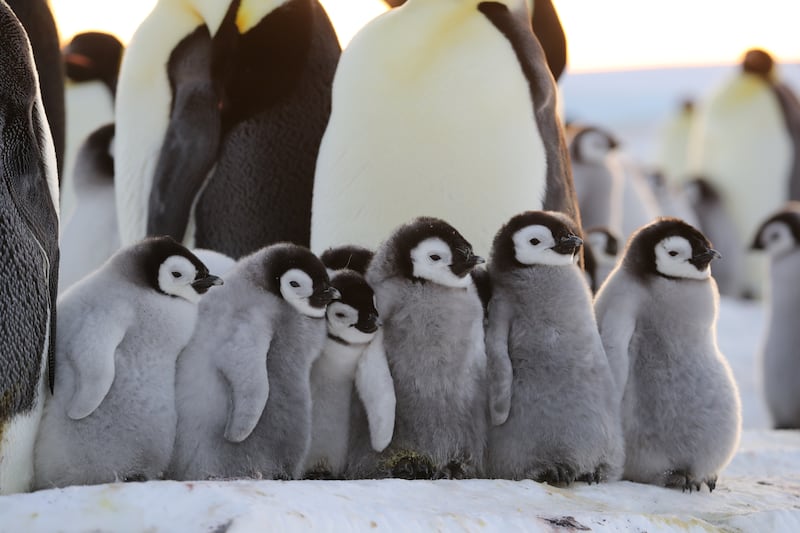
“With wildlife conservation, the challenge is never with the wildlife; it’s always with the people,” Gregory says via Zoom from London while the journalists and other guests were on the National Geographic Endeavour II, a 243-foot-long ship that was home base.
To reach it, people traveled to the port city of Guayaquil, or Quito, Ecuador, then boarded a small plane to Baltra, where the US Air Force had established the airport. Then it was aboard the first of many gas-powered inflatable boats, Zodiacs.
Each day, the ship docked near the islands of the western Galapagos. Zodiacs ferried people to the shores of Santa Cruz, North Seymour, Rabida, Fernandina, Isabela, Santiago, Puerto Ayora, and San Cristobal islands. All of these islands are the result of volcanoes that erupted. Nothing is nearby.
Each island appears unsullied. Ultimately, that’s the goal of anyone who cares about the planet: to make it look as if we weren’t here. And for the 270,000 tourists who visit the Galapagos annually, they see conservation in action.
“The most successful projects are the ones where there’s a coexistence,” Gregory says. “The Galapagos is set up with this ethos and this mantra that wildlife has this value, both intrinsically and, of course, economically. And it’s an amazing model for how we should be treating nature. If more places were like the Galapagos, the world would definitely be a better place.”
The post James Cameron Decrees: TV’s Biggest Stars Are About to Be Penguins appeared first on The Daily Beast.




